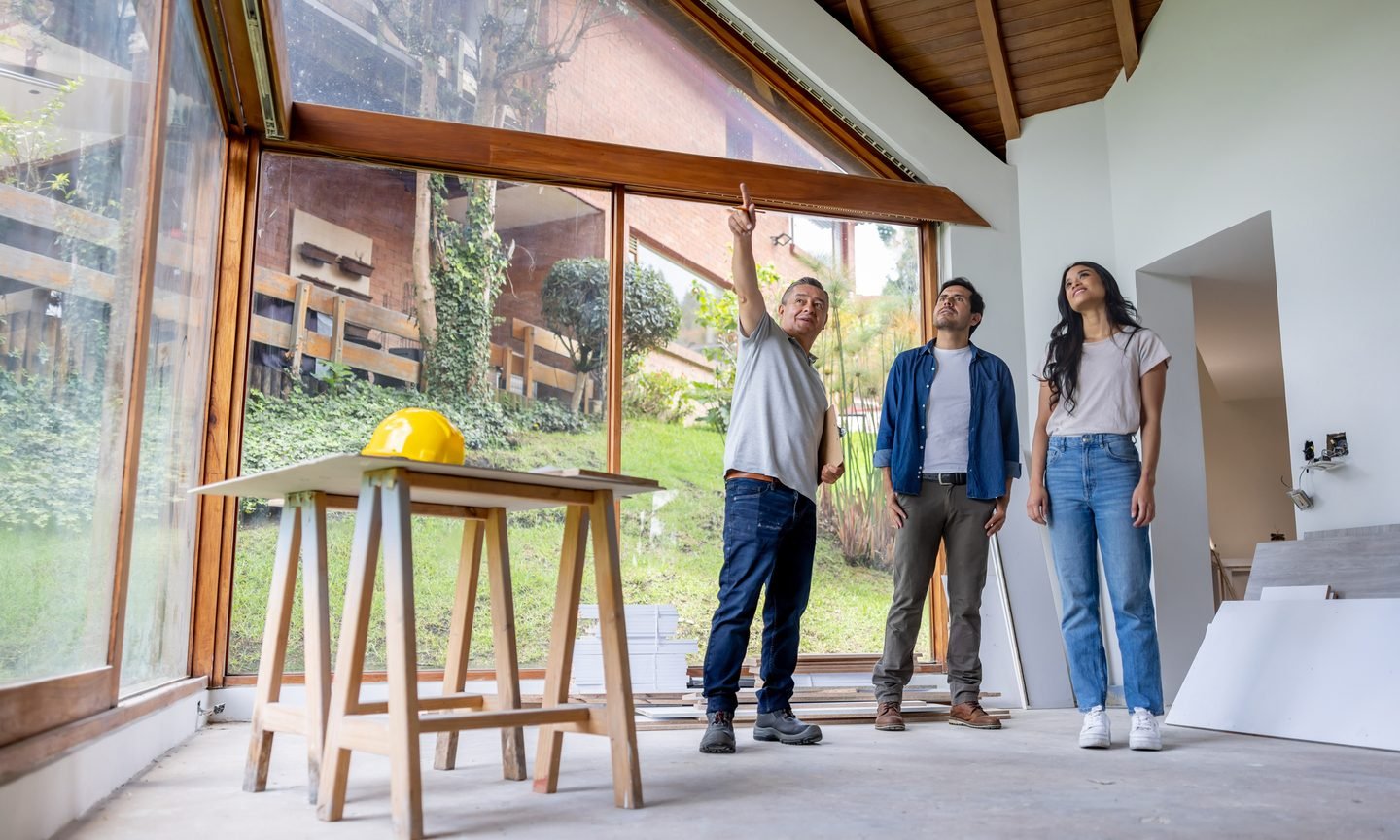After four years of living in her home in Athens, Georgia, experienced house flipper Charissa Bright realized she needed more space and an updated layout for herself, her husband and their two teenage boys. It was 2021, and working from home meant that her own office was a priority, along with some wishlist items like a bigger kitchen and a patio. Searching for a home that checked all her family’s boxes without needing additional updates proved to be a real challenge, and anyway, she preferred to stay in her current location.
Renovating let me control the timeline and make my home exactly how I wanted, but it can be a lot of work,” says Bright. During renovations, the family alternated between living in the home and a rented camper in the backyard.
Costs and effort are likely to play a role in your choice between remodeling or moving, but emotional components also matter. If you like your neighborhood and you don’t mind taking on a project, a remodel may get you the changes you’re looking for.
Alternatively, if you’re open to a new area, it may be in your best interest to sell the house that doesn’t fit and buy one that does. Both options have their benefits, and asking the right questions can help determine the path that works for you.
Falling rates give homeowners more choices
On November 7, the Federal Reserve voted to cut the federal funds rate by 0.25 percentage points. This may signal where mortgage rates are headed, as rates typically (but not always) move in the same direction as the Fed’s rate adjustments. Other economic factors to watch include inflation and job growth, which affect lenders’ rates.
Mortgage rates have been gently creeping downward over the past few months. The 30-year rate averaged 6.86% in the week ending Nov. 7, compared to an average of 7.32% in the week ending May 2.
Mortgage interest rates are projected to fall further over the next year or so, says Mike Hardy, a real estate investor and managing partner at Churchill Mortgage in San Dimas, California. This may mean that some homeowners who have been bound by the golden handcuffs of low interest rates can finally consider a move.
As the federal funds rate falls, rates for second mortgages (which usually have a rate equal to the federal funds rate plus 3% and a margin) will also drop. This could make it more affordable to finance a major renovation.
Compare costs — to your wallet and your peace of mind
Start with a holistic look at your needs and then research what the changes you imagine would really entail.
Remodeling
Hardy advises homeowners to consider five factors before deciding to remodel, as he does when investing in homes that need some TLC: money, time, stress, risk and return on investment.
“When we remodeled our home and added a room, the costs added up quickly,” says Bright. For example, a homeowner looking to add an extra bedroom could expect to pay around $50,000 to $62,500 on average — but this can go up to a six-digit figure if the addition requires significant structural changes. Be sure to obtain estimates from multiple local contractors.
“Buyers often underestimate the cost and time involved in remodeling,” says Ashley DeHart, a Realtor in Clovis, California. “A real estate agent can help them weigh these factors against the convenience and potential savings of buying a move-in-ready home.”
In addition to getting price estimates from potential contractors, ask about average timelines, examples of things that can go wrong and the level of disruption to daily life in your home. Talk to the contractors, and contact your city government or HOA for information on the kind of structural updates you’re allowed to make to your property.
Consider working with a real estate agent to analyze recent sales of homes with similar upgrades in your area. This will help you estimate how much value a renovation might add, says DeHart.
You should also consider whether the cost and work involved is worth it to you. For example, making the home more accessible may not add to the home’s financial value, but it could make it tremendously more livable for someone with limited mobility.
Moving
Before you decide that moving is the best option, consider the following: available properties, monthly mortgage payments and the cost of buying and selling.
Are there homes for sale that meet your criteria in your desired area? What kind of trade-offs would you be willing to make?
Your search criteria should be narrowed to features that are expensive or difficult to change, such as structural layout, location and size of the lot. “A good agent can help buyers see the potential in a home by suggesting cost-effective modifications that can meet their needs,” says DeHart.
Monthly mortgage payments
If you have a low interest rate compared with current rates (as you probably do if you purchased your home before 2022), moving might mean taking on a higher interest payment each month. However, if your home’s value has risen since you bought it, those gains may allow you to make a sizable down payment on your next home.
If you’re buying in another area, research local property taxes and account for any difference in your monthly payments.
The cost of buying and selling
As a homeowner, moving means that you’ll likely list your home for sale, potentially paying closing costs as both a seller and buyer. When you sell your current home, you’ll want to budget 6%-10% of the sale price for closing costs. In addition, buying typically costs around 2%-6% of the new mortgage amount in closing costs.
Whether you decide to remodel or move comes down entirely to personal choice. By considering the financial, practical and emotional aspects of both options, you can confidently make a decision that works for you.

